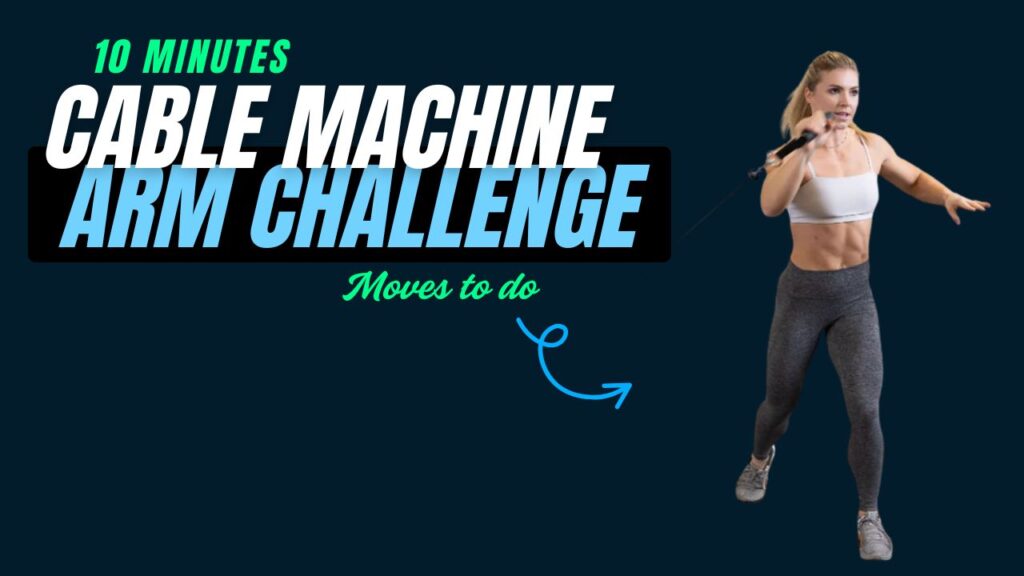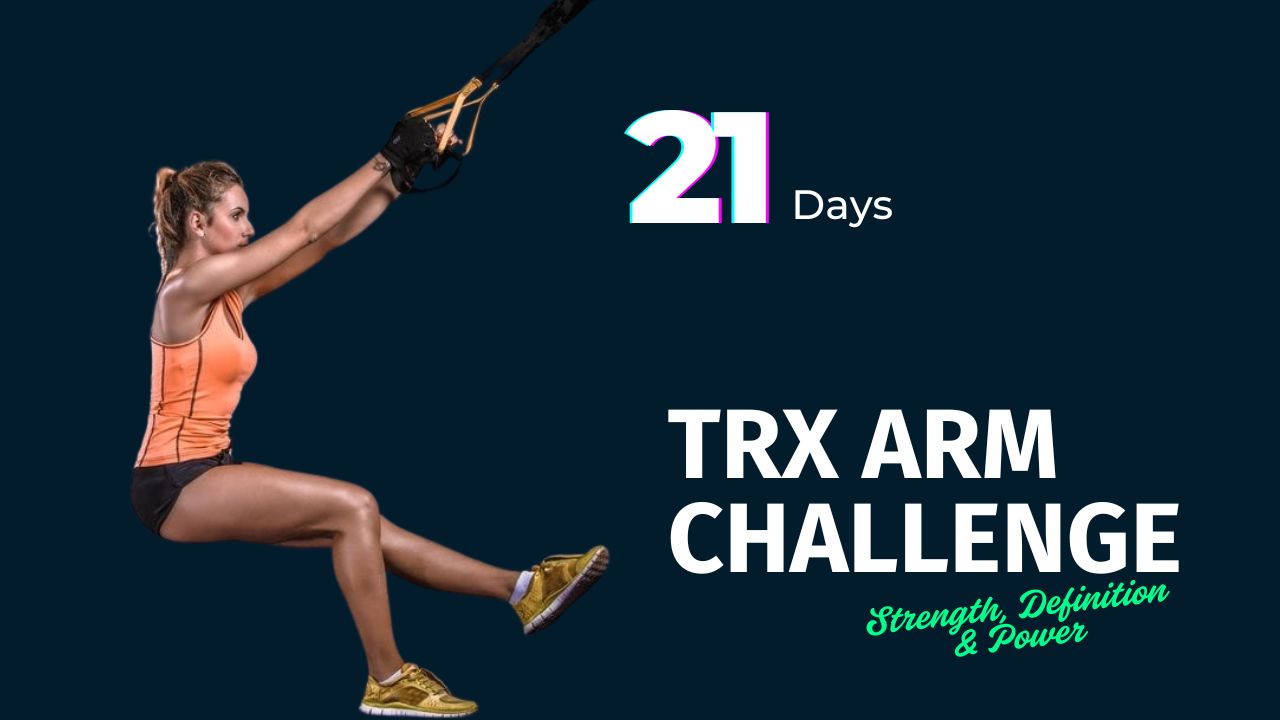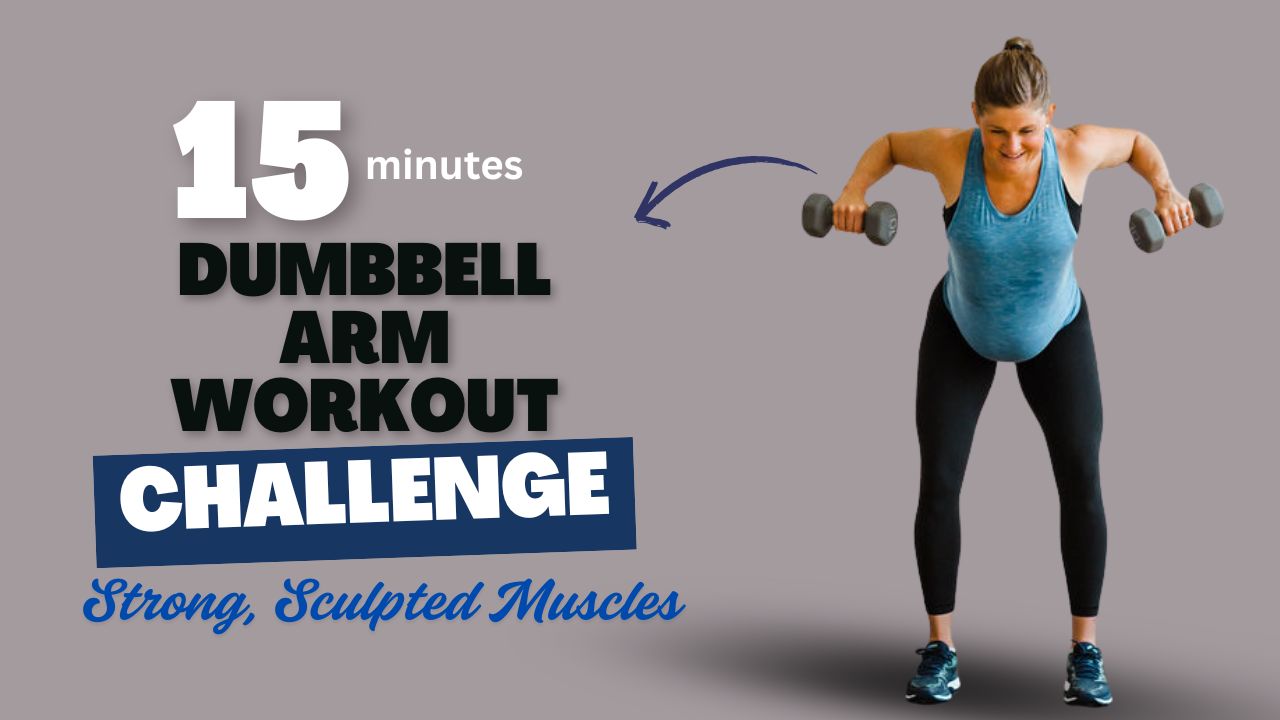When time is tight but your goal is to build toned, strong arms, the cable machine can be your best friend. Unlike free weights, cables keep constant tension on your muscles, helping you maximize gains in less time.
And here’s the kicker — you don’t need an hour-long session. With the right moves and intensity, you can give your arms a complete workout in just 10 minutes.
Hook: Imagine finishing your gym session with arms that feel pumped, strong, and defined — all in less time than it takes to scroll through your social feed. That’s exactly what this Cable Machine Power Challenge delivers.

Table of Contents
Why the Cable Machine is Perfect for Arm Sculpting
The cable machine allows you to target your biceps, triceps, forearms, and shoulders with consistent resistance throughout each movement.
Unlike dumbbells, which lose tension at certain angles, cables maintain muscle activation from start to finish.
Did you know? Research shows that cable resistance training can lead to better muscle activation in isolation exercises compared to free weights, especially for smaller muscle groups like the biceps and triceps.
What Can Happen After 30 Days of the Cable Machine Power Challenge
| Positive Changes | Why It Happens |
|---|---|
| Noticeable increase in arm strength. | Consistent resistance training stimulates muscle fibers, improving strength output. |
| Improved muscle tone and definition in biceps and triceps. | Constant tension from cables enhances muscle activation and shaping. |
| Better workout efficiency and form mastery. | Repetition builds neuromuscular coordination and proper technique. |
| Enhanced shoulder stability and forearm grip strength. | Supporting muscles adapt to handle weight more effectively. |
| Increased endurance for everyday arm-related activities. | Higher muscular stamina from short, high-intensity sessions. |
| Faster transition times between exercises. | Familiarity with cable settings and movements reduces downtime. |
| Boost in workout motivation and consistency. | Seeing and feeling results encourages long-term commitment. |
Do & Don’t for the Cable Machine Power Challenge
| Do | Don’t |
|---|---|
| Warm up for 2–3 minutes before starting to prevent injury. | Skip warm-up and jump straight into heavy lifts. |
| Maintain proper form with controlled movements. | Use momentum or swing your body to lift the weight. |
| Choose a weight that challenges you but still allows correct technique. | Select a weight so heavy that it compromises your form. |
| Keep your core engaged to stabilize your body. | Let your back arch excessively or your posture collapse. |
| Adjust the pulley height according to the exercise. | Use the same pulley position for all moves without adjustments. |
| Breathe consistently — exhale on exertion, inhale on release. | Hold your breath during reps. |
| Progressively increase weight or reps as you get stronger. | Stick to the same weight for weeks without progression. |
| Rest briefly (10–15 seconds) between exercises to keep intensity high. | Take long breaks that reduce workout efficiency. |
| Focus on slow, controlled eccentric (lowering) phases. | Let the cable snap back quickly without control. |
Warm-Up: 2 Minutes to Prime Your Muscles
Before jumping into the challenge, spend 2 minutes warming up to increase blood flow and reduce the risk of injury.
- Arm circles (30 seconds forward, 30 seconds backward)
- Light cable curls (low weight, 30 seconds)
- Light cable pushdowns (low weight, 30 seconds)
The 10-Minute Cable Machine Arm Workout — Exercises & How-To
Below are the six key moves for the challenge. Each one is explained in detail with a how-to guide.
1. Cable Bicep Curl
Description:
This is a classic move for building the front of your arms. The cable ensures constant resistance, making it more effective than some free-weight curls.
How to:
- Attach a straight bar to the low pulley of the cable machine.
- Stand facing the machine with feet shoulder-width apart.
- Grab the bar with an underhand grip, elbows tucked close to your body.
- Curl the bar upward toward your shoulders while squeezing your biceps.
- Slowly lower back to the starting position.
Pro Tip: Avoid swinging your body — focus on slow, controlled reps.
2. Overhead Cable Tricep Extension
Description:
This move isolates the triceps (back of the upper arms) and gives them that sculpted look.
How to:
- Attach a rope handle to the high pulley.
- Stand facing away from the machine, holding the rope overhead with both hands.
- Keep elbows close to your head and extend your arms upward until fully straight.
- Slowly return to the starting position.
Myth Buster: Many people think tricep exercises are just for men wanting “big arms.” In reality, triceps make up about two-thirds of your arm size, so training them is crucial for anyone wanting toned arms.
3. Cable Hammer Curl
Description:
This targets the brachialis muscle, adding thickness to your arms and improving grip strength.
How to:
- Attach a rope to the low pulley.
- Hold the rope with a neutral grip (palms facing each other).
- Curl the rope upward, keeping your elbows tucked in.
- Lower slowly and repeat.
Did you know? Strong brachialis muscles can make your biceps look bigger because they push them upward.
4. Cable Tricep Pushdown
Description:
One of the best exercises for targeting the lateral and long heads of the triceps.
How to:
- Attach a straight or V-bar to the high pulley.
- Stand facing the machine, elbows close to your torso.
- Push the bar down until your arms are fully extended.
- Slowly let it rise back to starting position.
Pro Tip: Avoid locking your elbows forcefully — keep the movement smooth.
5. Cable Front Raise
Description:
While mainly a shoulder exercise, it gives your arms more definition and stability.
How to:
- Attach a straight bar to the low pulley.
- Stand facing away from the machine, holding the bar in front of your thighs.
- Raise the bar to shoulder height with straight arms.
- Lower slowly.
Fact: Strong shoulders enhance the overall look of your arms and help prevent imbalances.
6. Reverse Grip Cable Curl
Description:
An underrated move for both biceps and forearms.
How to:
- Attach a straight bar to the low pulley.
- Grip the bar with an overhand grip (palms facing down).
- Curl the bar upward while keeping your elbows close to your torso.
- Lower slowly and repeat.
Did you know? Reverse grip curls improve forearm strength, which can help with other lifts like deadlifts and pull-ups.
Form Tips to Maximize Results
- Control the movement: Avoid jerking or using momentum.
- Engage your core: Keeps your body stable.
- Breathe properly: Exhale when lifting, inhale when lowering.
- Adjust weight wisely: Too heavy and you risk poor form; too light and you won’t challenge the muscles.
Common Mistakes to Avoid
- Leaning forward or backward to lift more weight.
- Letting the cable snap back instead of controlling the return.
- Using too wide or too narrow a grip for the exercise.
- Overtraining — muscles need rest to grow.
The 10-Minute Cable Machine Power Challenge — Workout Routine
| Exercise | Sets | Reps | Rest Between Sets |
|---|---|---|---|
| Cable Bicep Curl | 2 | 12–15 | 15 seconds |
| Overhead Cable Tricep Extension | 2 | 12–15 | 15 seconds |
| Cable Hammer Curl | 2 | 12–15 | 15 seconds |
| Cable Tricep Pushdown | 2 | 12–15 | 15 seconds |
| Cable Front Raise | 1 | 12–15 | 10 seconds |
| Reverse Grip Cable Curl | 1 | 12–15 | — |
How to Perform the Challenge:
- Move through each exercise in order, taking the listed rest periods.
- Keep the pace brisk to complete in 10 minutes.
- Use a weight that makes the last 2 reps of each set challenging but still with good form.
How to Progress Over Time
If you do this workout 3 times per week, aim to:
- Increase weight by 5–10% every 2–3 weeks.
- Add an extra set for the first four exercises after 4–6 weeks.
- Reduce rest periods to 10 seconds for more intensity.
Why This Routine Works
- Balanced arm targeting: Works biceps, triceps, forearms, and shoulders.
- Constant tension: Cable machines don’t let your muscles rest mid-rep.
- Time efficiency: High-intensity format boosts calorie burn while building muscle.
- Joint-friendly: Cables offer smoother movement, reducing strain.
Quick Recovery Tips for Arm Training
- Stretch after training to maintain flexibility.
- Stay hydrated to support muscle function.
- Consume protein-rich meals post-workout for recovery.
- Get 7–9 hours of sleep for muscle repair
Final Thoughts & Next Challenge Step
The Cable Machine Power Challenge proves that even in just 10 minutes, you can push your muscles to the limit and get a workout that delivers real, visible results.
By combining bicep, tricep, shoulder, and forearm moves in a fast-paced, high-tension format, this routine maximizes efficiency without sacrificing effectiveness.
Challenge Continuation Idea: Once you’ve nailed this workout for 4–6 weeks and can complete it with perfect form, it’s time to level up. You can:
- Double the rounds (complete the routine twice back-to-back for a 20-minute power session).
- Add drop sets — after your last set of each exercise, reduce the weight by 30% and go for as many reps as possible.
- Incorporate supersets by pairing a bicep exercise immediately with a tricep exercise before resting.
- Add a finisher — such as 60 seconds of cable battle rope waves or rope high pulls for an explosive burn.
This progression not only keeps your muscles guessing but also prevents workout plateaus. In just a couple of months, you’ll notice your arms feeling stronger, more defined, and ready to tackle even more advanced training challenges.
Consistency is key — so commit to the challenge, track your progress, and keep raising the bar. Your arms will thank you.
Frequently Asked Questions (FAQs)
Can I really build muscle in just 10 minutes a day?
Yes — while longer workouts can offer more volume, short, high-intensity sessions like this Cable Machine Power Challenge can still stimulate muscle growth, especially for beginners or those with limited time. Consistency and progressive overload are key.
How heavy should I set the cable machine for this challenge?
Choose a weight that makes the final two reps of each set challenging but doable without sacrificing form. If you can easily exceed the recommended reps, increase the weight slightly.
Can I do this workout every day?
It’s best to give your muscles at least 48 hours of rest between arm-focused workouts. You can alternate this routine with lower-body or full-body workouts on other days.
Is this routine suitable for beginners?
Yes — simply start with lighter weights and focus on mastering your form before increasing resistance. Beginners may also add slightly longer rest periods if needed.
Can I replace dumbbell arm workouts with cable exercises?
Absolutely. Cable exercises offer constant tension, which can be even more effective for certain muscle groups. They’re also easier on the joints due to smoother motion.
Will this workout also help me burn fat?
While this routine is primarily designed for muscle toning and strength, the high-intensity format can contribute to calorie burn. Pair it with a balanced diet and overall active lifestyle for fat loss.
Do I need any warm-up before starting?
Yes — warming up for 2–3 minutes increases blood flow, improves flexibility, and reduces injury risk. Light cable curls, pushdowns, or dynamic stretches work well.
What if my gym doesn’t have a cable machine?
You can replicate most moves with resistance bands anchored to a stable surface. While the feel is slightly different, bands still offer constant tension on the muscles.
Can women do this workout without “bulking up”?
Yes — due to hormonal differences, women typically won’t gain large muscle mass from strength training. This routine will instead create a toned and defined appearance.
How soon will I see results?
If paired with proper nutrition and done 2–3 times per week, noticeable changes in muscle tone and strength can appear within 4–6 weeks.










